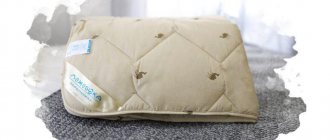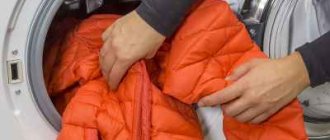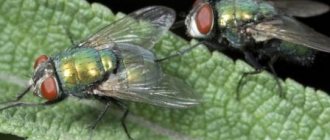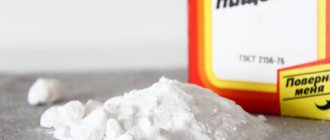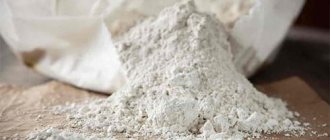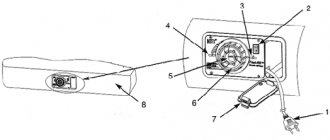A blanket made of camel wool has been familiar to us since childhood. We thought it was warm and light, but at the same time prickly and homely. Previously, such a product was in serious short supply, so no one doubted the quality. Today, the words of manufacturers are difficult to believe, since many models are made of synthetic materials with a small addition of natural wool.
Let's look at popular manufacturers offering goods of adequate quality. Additionally, we will learn about the features and advantages of camel wool blankets.
What are camel wool blankets?
The main difference between any camel blankets is lightness, thinness and warmth: on average, the weight of a blanket is 1.1-1.5 kg, the thickness is only a few centimeters, and camel wool, both in its pure form and with the addition of synthetics, is one of the warmest fillers . These blankets are great for people who are prone to constant freezing. Natural material has a beneficial effect on the overall health of a person, has a calming effect on joints and can even prevent the occurrence and development of rheumatism. Soft “dry” heat is evenly distributed throughout the body, relaxes muscles, gives comfort and tranquility.
Execution can be in two variations:
Open . These are purified down and wool on a fabric base, with a knitted edging. In thickness and weight, such blankets resemble a blanket, but they are extremely warm. Camel wool is difficult to dye, so all products usually have a characteristic color. Cheaper blankets are not entirely pleasant to the touch, they are slightly scratchy; more expensive ones, on the contrary, are very pleasant to the touch, but their cost can reach several tens of thousands of rubles.
Closed . Only wool hairs are used as filler, without fluff, so synthetic materials are used to add structure and minor volume: polyester or, less commonly, artificial swan down. Synthetics can be up to 60-70%. Thanks to the fabric cover, the blanket does not prick. High-quality closed blankets are produced in a cassette design, when there is a stitch along the entire plane that maintains an even distribution of the filler over the entire plane.
The structure of camel hair is special: each fiber is hollow inside and filled with air. The inner part of the hair is able to absorb a small amount of moisture. The outer part has a water-repellent effect.
Camel wool contains a huge amount of lanolin. This natural wax of natural origin has healing restorative properties. The effect of lanolin occurs by absorption at natural body temperature.
From my own experience I can say that when choosing a blanket with closed wool, you must definitely pay attention to the composition of the cover of the product. The material must be durable, dense and made of natural material. Satin or silk is best; you can choose teak. Such fabrics have useful characteristics:
- firstly, hygroscopicity;
- secondly, optimal thermoregulation;
- These fabrics also promote natural and free air circulation.
Some of the most popular and high-quality products, in my experience, are blankets with a filling density of 300 g/m2. It is better to combine natural wool with a cotton duvet cover.
Which color to choose
The colors of products made from open wool are not very diverse. This is due to the fact that camel hair cannot be dyed, so all colors are the natural color of the animal.
The color range is from white to dark brown (beige, cream, light brown, brick - 14 shades in total). The color depends on the age and breed of the camel. The white color is most valued, since all camel calves up to one year old have a white color, and it is their wool that is characterized by the highest quality.
Despite the apparent monotony, it is these warm and calm natural tones that have the most beneficial effect on the body, as evidenced by numerous reviews of people who have been using this product for many years.
Customer reviews: advantages and disadvantages
It was the personal opinion of people who had already become owners of blankets that helped me make a good choice.
According to customer reviews and my opinion, I have collected all the “Pros” and “Cons” into a visual table:
- It is comfortable to sleep under a blanket both in summer and winter. Camel wool perfectly preserves natural body temperature. In the heat of summer, it’s comfortable under a blanket; it gives some slight coolness;
- Good air exchange allows the skin to “breathe” and excessive sweating does not occur. After sleep there is a feeling of cleanliness and freshness;
- A camel wool blanket is durable and wear-resistant. Even after 7-10 years it retains its texture, integrity, and density. The average period of operation without loss of quality is about 15 years;
- A thick blanket (300 g/m2) pleases with a high level of hygroscopicity. During sleep, especially deep sleep, natural moisture is released, which the material instantly absorbs. The blanket remains dry and pleasant to the touch;
- The closed model is very soft, the heaviness of natural fabric is not felt. The blanket is easy to carry and pleasant to cover.
- The blanket is good, but it is not recommended for people with allergic reactions to buy it. Even if you have bronchial asthma, you should avoid using an open blanket made of natural material. Closed models usually cause problems only if there is an intolerance to animal protein;
- The blanket is very difficult to care for. Everyone wants to spend less effort and time on washing (after all, only the manual option is acceptable). Real wool can be damaged by moths, it is necessary to pack the blanket tightly when storing;
- The price is quite high. Even compared to the cost of natural fillers, camel hair is one of the most expensive materials.
Comparison of camel pillows with other fillings
Conventionally, all pillow fillings are divided into 2 groups: synthetic and natural. The main disadvantage of all natural products is the risk of an allergic reaction. Some items are difficult to care for, such as a pillow made from seaweed. Swan down pillows often harbor mites. Camel litter does not have this drawback.
Artificial fillers quickly become confused and deformed. They do not absorb moisture well, retain unpleasant odors, and accumulate static electricity.
Effect on the human body
It was the healing properties of the camel blanket that, at one time, became the main reason for my own choice. You can find many positive qualities of products with a filler density of 300 g/m2 or more on the Internet. But in my opinion, these are the most obvious and important:
- the nutritional capacity of soft tissues improves;
- toxins that the human body naturally produces are neutralized;
- the skin becomes soft, elastic, rejuvenating processes occur;
- blood circulation improves;
- helps relieve pain and discomfort in arthritis, arthrosis, radiculitis, osteochondrosis.
The blanket is not intended for a specific age; it can be used by adult men and women, children, and elderly people.
Comparison table of characteristics
We suggest comparing the proposed blankets using a general table.
| Model | Filler density, g/m2 | Materials used | What time of year is best to use? | Peculiarities |
| Verossa Camel | 300 | Percale, camel hair | Any | Edging, quilted, dry clean |
| AlViTek Sahara | 300 | Teak, camel hair 80%, down 20% | Edging, uniform stitch, decorative stitching | Edging, quilted, dry clean |
| KARIGUZ Clean Camel | 370 | Percale, camel hair | Quilted, cotton cover, increased density | Edging, quilted, dry clean |
| DREAM TIME | 300 | Camel wool, cotton | Decorative edging, quilting, camel patterns | Edging, quilted, dry clean |
| Princess and the Pea PREMIUM | 300 | Cotton, camel hair | Camel design, quilted, piping | Edging, quilted, dry clean |
| ECOTEX Caravan | 300 | Teak, camel hair | Stitching, compact storage | Edging, quilted, dry clean |
| OLTEX | 300 | Camel wool, teak, artificial down | Safe filler combination | Edging, quilted, dry clean |
How to distinguish an original from a fake
On the bedding market you can find not only original products and analogues, but also low-quality fakes. A few simple recommendations helped me make the right choice:
The cost of a camel blanket made of natural wool cannot be less than $100. The price is made up of the costs of production, material finishing, and transportation.
The quilt is used with a thick cover made from teak, cotton, cotton and linen. Only in this case, the filler will not come out of the duvet cover. In the original models, there is a small flap in the corner of the case (usually behind the fabric insert with the logo). It allows you to check the condition of the filler.
The natural filler is checked as follows:
- It is worth finding a small pocket in a quilt.
- From there you can pull out a small amount of filler.
- The material should be heterogeneous, the hairs differ in thickness and length. If you squeeze the wool between your fingers, there will be no stinging sensation. Elastic wool always returns to its shape after being released.
Natural wool should look natural. It can be a shade of delicate ocher or brown tones. Depending on the age of the camel, the coat will be lighter in color. If this is a closed model in a case, do not forget about the presence of synthetics that are different in color from the main filler. Even if the manufacturer claims that the filler is 100% camel hair, synthetics are still probably used to add volume.
Camel hairs are filled with air, the weight of the blanket will not exceed one and a half kilograms for a double model.
The weaves must be of a uniform type. The open camel blanket has a uniform surface and is equally soft and smooth.
Thanks to such simple comparative points, you will be able to find out whether this is the original or not.
Children's sizes
When it comes to the main members of the family, children, the price of the issue recedes into the background, and high quality, safety and unpretentiousness become paramount, because for children everything is the best. Camel blankets made of wool or down are the best choice for little ones and older children. They are hypoallergenic, do not shed, do not collect dust, and do not cause irritation. Plus, a warm, comfortable blanket weighs almost nothing, which is important when covering such a fragile creature. Depending on the manufacturer, you can find several standard sizes on sale that fully correspond to the height of the child and the dimensions of the crib, which simplifies the choice.
- 100 × 135 cm.
- 100 × 140 cm.
- 100 × 150 cm.
- 110 × 140 cm – the most popular size.
In what cases is an orthopedic chair cushion needed?
Reviews from doctors about the Asonia pillow: .
Quilted cotton bedspreads are produced in Ivanovo.
Size chart
| Double (family type) | 200x220 – European standard; 195x215 – European standard; 175x205 – Soviet standard (English size); 220-240 – maximum European size |
| One and a half | 155x215 – European standard for one-and-a-half blanket; 140x205 - Soviet standard (English size); 160x205 – children’s size; 160x215(220) - Soviet standard (English size) |
Choosing the required size is quite simple. It is important to consider the height and number of people who will be using it. Choose the length of the blanket according to the taller person.
The best known manufacturers
Magicwool Camel
A popular Russian brand offers products made from the wool of ghoul non-working camels.
- material – 100% wool;
- whole cloth;
- pile – 3-5 mm;
- size – 140/180/220x200 cm.
The single-sided, voluminous, breathable blanket is perfect for harsh winter temperatures. An open-type blanket is perfect for those who love the soft touch of silky material. You can choose a blanket for an open terrace or gazebo.
Cost: from 8,000 rubles to 18,000 rubles and above, depending on the features of the cut.
Kariguz
The Russian company produces cassette and quilted blankets from natural camel wool. The material does not roll up or lose its shape. A high level of breathability prevents overheating of the body.
- dimensions: 140/172x205, 150/200x200, 200x240 cm;
- natural camel wool filler;
- filler density: 300 g/m2 - 600 g/m2;
- pile: short, soft;
- cover: cotton.
Suitable for summer, demi-season and winter periods. The natural cover allows camel hair to actively influence the human body, maintaining the natural temperature of his body.
Cost: from 9,000 rubles.
Togas
Country of origin: Greece. During the processing of the material, camel wool becomes soft and elastic; according to the manufacturer, the possibility of the formation and development of microorganisms is completely eliminated (but the issue is controversial, since it is a natural material in any case).
- 100% camel hair;
- filler density: 470 g/m2 - 600 g/m2;
- lightweight version;
- cover: jacquard, silk, cotton;
- wide size range.
The blanket will be a good addition to the nursery; it does not create a feeling of heaviness, gives pleasant coolness in the summer season and soft warmth in the winter. After sleeping under a blanket for 6-8 hours, a child or adult will not be wet; the product allows air to circulate freely, absorbs natural secretions, and gives comfort and coziness. This is an excellent option for applicants with joint and blood pressure problems.
Cost: 10,000 rub.
Alvitek (Alvitek)
A Russian company produces quilts. Single-needle machines make neat, strong seams that reliably retain the filling in the fabric cover. Main differences:
- dense structure;
- light weight;
- repels dust;
- filler density: 200-400 g/m2;
- During processing, the wool retains the maximum amount of natural wax - lanolin.
Cost: 8,000 rubles.
Verossa (Verossa)
One of the best, in my opinion, manufacturers. Follows modern trends and offers camel blankets in a stylish format.
- wool of young camels;
- cover: cotton;
- stitch type: single-needle machine;
- fabric: cotton, polysatin;
- wide range of sizes;
- filler density: 300 g/m2.
Cost: from 8,500 rubles.
Manufacturers and price review
A high-quality camel blanket cannot be cheap.
The following parameters influence pricing:
- Quality and quantity of raw materials.
It is heterogeneous - it consists of guard hair and downy undercoat. Both wool and down are used, which are separated by hand. But the latter is more valuable. By international standards, Mongolian Bactrian fluff is considered to be of the highest quality.
The most valuable is the down of young non-working camels (Baby camel) for its special softness and lightness. Blankets made from camel down belong to the elite category, their cost starts from 10,000 rubles.
Wool is cheaper than down, because... it is rougher, heavier and tougher. Products made from it will cost 3000-7000 rubles.
The price is 2000-3000 rubles with the indication on the label “wool - 100%” - most likely you are looking at a filler made from a mixture of camel and sheep raw materials . A good manufacturer will indicate the percentage, and it will most likely be 40x60 or 50x50.
A blanket with mixed filling is heavier , more voluminous, but cheaper and still natural.
Cheaper than 1,500 rubles - option with thermally bonded filler. This is a homogeneous fabric, to obtain which the wool is passed through a hot roller, where it is glued together using synthetic fiber. The percentage of camel component in such a filler is directly proportional to the price of the finished product.
How to choose a camel blanket and not a fake?
Product data
Pay attention to the composition indicated on the sew-in label. When using a natural component, it must be indicated “camel wool - 100%”. If it is simply written “camel”, then the manufacturer is hiding from you exactly how much wool there is and what type of wool it will be (most likely, it will be a thermally bonded type of filler). The manufacturer, who has nothing to hide, will provide complete information about himself, the composition of the filler, the fabric of the cover, and the care of the product on a sewn-in label that will retain the information for a long time. Pay attention to the quality of workmanship and packaging. This can say a lot.
- Method of assembling the blanket and material of the cover.
In descending order of price: cassette, carostep-quilted and silk-satin-teak, respectively.
- Manufacturer.
Fame, positive reviews and a long history of the manufacturer always increase not only the prestige of the product, but also its cost.
Some well-established companies: Billerbeck (Germany), Irisette (Germany), Jork&Larsen A/S (Denmark), Dargez (Russia).
Proper care
Blankets are fancy and difficult to care for; their structure and integrity can only be preserved if:
- hand wash up to 300C (for some products even this type of washing is not allowed);
- using lanolin-containing detergents;
- it is necessary to squeeze out carefully and easily, twisting is not allowed;
- drying – natural, exclusively in a horizontal position;
- ventilate the product 2-3 times a year;
- The blanket should be stored separately from other bedding. It is best to choose packaging made from natural materials.
It is best to wash it a couple of times a year or less.
Features of camel fur
Camel hairs are quite thin, on average 23 microns. The yarn enters the market in a limited range of colors:
- Brown;
- Yellow;
- Creamy.
Yarn, like down, is not usually dyed so as not to deteriorate its quality. We can say that this is one of the most natural and environmentally friendly materials. The most popular raw material is the fur of steppe Mongolian individuals.
Camels are bred for their wool and are not subjected to stress. The fur of these animals is expensive: you can’t “pluck” much fluff from one camel.
Analogs
The closest analogue of a camel blanket can be called sheep wool blankets, and a slightly more distant analogue is bamboo products.
| Criterion | Blanket | ||
| camel | Sheep | Bamboo | |
| Appearance | The color range is small, the wool is difficult to dye. | Wide range of different shades. | Wide range of different shades. |
| Thermal conductivity | One of the warmest, warmer analogues presented | Warms well and maintains temperature balance. | Maintains natural body temperature well |
| Tactile sensations | Inexpensive products made from the wool of adult animals are prickly. | Soft, comfortable and pleasant. | Soft, voluminous and pleasant |
| Weight | Light and airy | More severe | Average weight |
| Care | Hand wash or dry clean. | Dry clean, hand wash or dry clean. | Machine washable |
| Resistance to deformation | It wrinkles easily, but with proper care the shape lasts a long time. | Natural curls prevent the product from pilling. | Resistant to any deformation |
| Allergenicity | Allergic reaction in people with intolerance to animal protein. | Hypoallergenic | |
| Wear resistance | Lasts one and a half times longer. | No more than 10 years. | 5-10 years |
| Price | Above average | Average price range. | Below the average |
Choosing a blanket made of camel wool is an excellent choice for all connoisseurs of quality, practicality, and naturalness. A light, soft, pleasant-to-touch blanket will provide a sound, healthy sleep, give comfort and tranquility. The product will eliminate pain in muscles and joints, help you relax and fully recover during rest.
The cost of the product is really not small, but it is worth considering all the positive aspects, the duration of its use, lightness, and stylish aesthetic appearance. A blanket made of camel wool will be an excellent gift for yourself, your family, loved ones and friends.
Rating of the best fillings for blankets
Today you can find blankets with 20 different fillings.
At first glance, it may seem that the requirements for insulation for a blanket end with “warm”, “soft” and “light”. But in fact, in order to choose the perfect blanket, you need to have at least approximate knowledge about the properties of popular fillers: which one is heavier, which one holds heat longer, which one is the easiest to care for. Other factors may also influence your choice:
- Good thermoregulation;
- Fast moisture removal;
- Light weight (easy to store and wash even in a machine with a small drum);
- Life time;
- Texture: Some people like blankets that are airy and soft, while others prefer thick, smooth fillings.
This article contains all the materials that are used in modern blankets. We decided to rank them by premium, that is, the rating starts with models that are difficult and expensive to produce.
Down: the most airy, soft and elastic
Goose down is more valuable, but duck down is cheaper
The first place is occupied by natural down, which has been valued since ancient times. If you wrap yourself in a soft and airy blanket, you will feel like you are lying on a cloud. The fluff is manually collected from the bird's sternum during natural molting, when each fluff has matured and become sufficiently elastic. It comes in white and gray colors, but the shade has almost no effect on the characteristics of the filler.
The all-season double blanket weighs only half a kilogram, but it's enough to keep you warm even in the harshest winters. Unlike feathers, down does not protect birds from the external environment, but warms them, so the length of a very soft and elastic leg does not exceed 1 millimeter, and around it there are many delicate hairs 20 millimeters long. They retain a lot of heat, but do not prevent air from circulating freely. Before it gets into the blanket, the fluff undergoes many treatments, including silver ions, and becomes practically sterile. Thanks to the treatments, duvets last for about 25 years, and many of them can even be machine washed.
pros
- The most airy, soft and light;
- The weight of an all-season double blanket is about 450 grams;
- Ideal for winter and off-season;
- Does not accumulate static electricity;
- Excellent air permeability;
- Beats well;
- Can last up to 25 years;
- The filler does not cake or stick together.
Minuses
- High price;
- Some models cannot be machine washed;
- Not suitable for allergy sufferers.
Cashmere: the warmest
Cashmere is 8 times warmer than wool
To make one blanket, you need to manually collect down from 15-20 Kashmiri goats during their natural molting period once a year. After which the fluff is washed, combed and processed. One of the most expensive and rare materials rarely becomes a filler for blankets. But when it does, a model this soft and warm has few equals. Soft and delicate cashmere is valued even more than silk.
The filler always has a milky white tint, and in appearance it looks like yarn made of many small hairs. It is so thin (15 times thinner than a human being) that it cannot be distinguished with the naked eye. The hair is surrounded by a large number of air chambers, so under such a blanket it is always warm, but not hot. Although the filler is made from animal fluff, thanks to the unique structure of the hair, the blanket does not cause allergies, and it does not harbor microbes. Typically wool duvets are considered heavy, but the double cashmere model weighs just 800 grams.
pros
- The warmest filler (8 times warmer than wool);
- Hypoallergenic, despite animal origin;
- Suitable for any time of year;
- Has antibacterial properties;
- Therapeutic effect thanks to lanolin (animal wax);
- Serves up to 10 years;
- Absorbs moisture and quickly removes it;
- The all-season double blanket weighs only 800 grams.
Minuses
- High price;
- Dry cleaning only.
Silk: better thermoregulation
Despite its animal origin, the filler is completely hypoallergenic
Silk fiber for blankets is obtained in the same way as silk threads - from the cocoons of a butterfly called the silkworm. The cocoons are sorted by hand, the larvae are removed from them and wound on an arc until the thread weighs 25 grams. The length of one thread can reach up to 1500 meters. It is elastic, but moderately heavy, so a double blanket weighs about 1 kilogram.
There are two types of silk Silk is divided into two types: tussah (wild silkworm) or mulberry (kept in special conditions). Mulberry fibers are more valuable: silkworms feed on the leaves of one tree, and therefore their threads are uniform. They undergo only manual processing (washing, combing), and do not require chemicals, therefore they completely retain all their natural properties. Mulberry serves for about 20 years, and tussah - 6-7.
Silk filling is similar in appearance to cashmere; it is also white, resembles yarn and consists of many small threads. A silk blanket adapts best to body temperature; it is not cold under it in the off-season, and not hot under it in the summer. For some models, only dry cleaning is allowed, but the blanket does not cause problems in care because it repels dust, has natural bactericidal properties and is not a habitat for dust mites.
pros
- Excellent thermoregulation;
- Hypoallergenic despite animal origin;
- Has a cooling effect;
- Quickly absorbs and evaporates moisture;
- Suitable for hot nights and off-season;
- The service life is more than 20 years (mulberry, and tussah lasts 6-7 years).
Minuses
- High price;
- A double all-season blanket weighs about 1 kilogram;
- Almost all models require dry cleaning;
- These blankets are most often counterfeited.
Eucalyptus: best bactericidal properties
Eucalyptus is a natural antiseptic, and the fiber in the blanket retains its antimicrobial properties for more than 10 years
A eucalyptus blanket that breathes and quickly absorbs and wicks away moisture is perfect for hot nights. The filler consists of long light hairs that are obtained from the stems of eucalyptus trees. After processing, the fibers retain not only their porous structure, in which there is a lot of air in the pores, but also the antibacterial effect for which wood is famous. Thanks to this, all maintenance of the blanket is limited to annual machine washing. Eucalyptus contains essential oils that help you relax and promote sound sleep. Only the properties of the oils are transferred to the blanket, but not their smell. Even allergy sufferers can afford this model, because eucalyptus does not irritate the respiratory tract.
pros
- Great option for hot weather;
- Has good bactericidal properties;
- Soothing eucalyptus oils promote sound sleep;
- Quickly absorbs and absorbs moisture;
- A double all-season blanket weighs about 900 grams;
- Service life more than 10 years;
- Hypoallergenic and organic.
Minuses
- The price is above average.
- Low heat conductivity.
Wool: best "dry heat" effect
Wool contains lanolin - animal wax, which creates a favorable microclimate and has a good effect on the body.
A blanket filled with camel, merino or sheep wool can be used all year round because it provides dry warmth. The wool is cut, washed and dried by hand; this must be done very carefully, so it is impossible to automate the process. The filler feels elastic and dense, and looks like yarn with many hairs. The wool curls, bends, clings to each other with the help of microscales, so the filler will not migrate throughout the blanket. There is a lot of air between the hairs, and inside the hair itself there are a large number of air chambers, so the blanket warms well, but does not allow a person to sweat even during a severe cold. The filler is best suited for those who often get cold, as well as people with sore joints.
TOG (indicator of the warmth of a blanket) Woolen models do not have less than 6, although the scale starts from 3. Blankets with an index of 3-4.5 are designed for summer, 6-7.5 - warm off-season, 9-10.5 - cold off-season, and 12-13.5 – winter.
pros
- Very warm filler;
- for any time of year;
- Therapeutic effect thanks to lanolin;
- Serves 10-15 years;
- Not electrified;
- They don't sweat under such a blanket.
Minuses
- Not recommended for allergy sufferers (except for merino wool, the thickness of its hair is 14 microns, and wool thicker than 25 causes allergies);
- Some models cannot be machine washed;
- A double all-season blanket made from camel wool weighs about 1 kilogram, and from sheepskin - 1.2.
Linen: the best filler in the heat
Despite the fact that linen is considered the best option for hot weather, this blanket is quite heavy (1 kg)
Just as linen clothes are very comfortable in hot weather, a blanket with linen fiber is the most comfortable way to fall asleep on hot nights. Linen has natural cooling properties, allows air to pass through well and does not allow a person to sweat. The linen filling has a brown tint, but it is not noticeable under the duvet cover, so you can choose any color for the duvet cover. In order to extract bast fibers from the stem, the plant must first be soaked, and then crushed and shaken so that only the central part remains. The fibers resemble long hairs, which are held together into a single layer using heat setting. A linen blanket is heavy, but it is very easy to care for; the fibers contain silicon dioxide, which has a powerful antibacterial complex. Linen threads are even used to stitch wounds in surgery because they are antibacterial, hypoallergenic and are completely accepted by the body and then dissolved.
pros
- A good option for the summer;
- Excellent air permeability;
- Effectively absorbs and evaporates moisture;
- Bactericidal properties;
- Hypoallergenic and organic;
- Has a slight cooling effect;
- Machine washable.
Minuses
- Short-lived (lasts up to 7 years);
- A double all-season blanket weighs about 1.1 kilograms;
- The filler is considered unusual; not all brands use it.
Bamboo: organic filler
Bamboo stems are never treated with chemicals or growth enhancers.
A bamboo blanket is perfect for the warm season and for those who sweat a lot, because the product absorbs and evaporates moisture well. And also for allergy sufferers and people for whom it is important that the raw materials for the filler are completely organic. While bamboo is growing, it is not treated with anything, because it has strong bactericidal properties and grows at a speed of 75 cm per day. Then the fibers are combed out from the stems of the plant; in appearance they resemble long white hairs. The antibacterial properties of bamboo are preserved in the form of a filler: an independent Swiss company placed pathogenic microorganisms on bamboo fiber, 70% of them died within 24 hours. Another nice bonus from nature: bamboo contains copper sulfate chlorophyllin, so the blanket does not absorb odors and repels dust.
pros
- Ideal in hot weather;
- Absorbs moisture well and quickly evaporates it;
- Antibacterial properties;
- Eco-friendly and hypoallergenic
- Machine washable;
- A double all-season blanket weighs about 900 grams;
- Small price.
Minuses
- Short life (5-7 years);
- Low heat.
Polyester: the easiest to care for
The blanket requires such simple care that it is most often taken on camping trips.
Various fillers are made from polyester fibers: swan down, holofiber, 4L polyester fiber. They can consist of long hairs (swan's down) or look like many small spirals that are arranged chaotically (holofiber). But this mass will always be very light, loose and soft. The filler is considered the most airy of all artificial models, and therefore it is often called the best synthetic filler. Polyester fibers are hollow inside, but very springy, so even after numerous washes, the blanket itself returns to its original shape, it doesn’t even need to be fluffed. Polyester fibers warm well and dry quickly, but like any synthetic, they do not allow air to pass through very effectively. This model is perfect for the off-season or for people who do not suffer from excessive sweating.
pros
- Warm;
- Does not deform;
- Machine washable;
- Low price;
- Hypoallergenic;
- A double all-season blanket weighs about 900 grams;
- Long-lasting (up to 10 years).
Minuses
- It is electrified, like any artificial material;
- Poor air permeability;
- It practically does not absorb moisture, so in summer it can be hot under it.
Cotton: the most budget-friendly natural filler
Even if you spill something on the blanket, it can be easily washed off
If you have ever seen cotton bolls, you can easily imagine the filling of such blankets. They are collected by hand, then sorted by fiber length, processed and bonded at high temperatures into a single white layer. This procedure is completely safe for human health and the environment. Cotton blankets are especially comfortable during the mid-season period. They allow air to pass through perfectly, but do not remove moisture well: they quickly absorb and slowly evaporate it. Cotton is not the lightest material: a double duvet weighs just over a kilogram. But this is the most budget-friendly of all natural fillers. It is also very easy to care for: cotton fibers are resistant to alcohol, vinegar and temperatures up to 150 degrees.
pros
- Organic and hypoallergenic;
- Affordable price;
- Washable;
- Not electrified;
- Good filling for an all-season blanket.
Minuses
- A double all-season blanket weighs just over 1 kilogram.
- Short service life (5-7 years);
- It takes a long time to dry.
Sintepon: the best option for a summer residence
Reminds me of padding polyester from children's toys
Synthetic winterizer is used to insulate clothes, as a filler for toys, and also for blankets. A good quality synthetic padding blanket will last for about 2 years, but it is cheaper than all the fillings we talked about. Externally, the smallest white fibers made of 100% polyester resemble cotton wool, because padding polyester was originally developed as a lightweight analogue of batting. A double blanket weighs just over 1 kilogram. It warms well, but does not allow air to pass through and does not remove moisture well, so it is best suited for the off-season. It is not recommended to wash a padding polyester blanket, since after contact with water, padding polyester can lose volume and up to 50% of its thickness. But you can leave it at the dacha for the whole winter: the filling does not fall off, the blanket does not deform, and microorganisms will not appear inside the synthetic material.
pros
- The most budget-friendly;
- The best option for a summer residence;
- Ideal for off-season;
- Quite warm and voluminous;
- Hypoallergenic (however, the glue may cause allergies).
Minuses
- Short service life (up to 2 years);
- Cannot be machine washed;
- Weak hygroscopicity, it can be hot under it.
- A double all-season blanket weighs just over 1 kilogram.
How much do good blankets cost? The cost of a blanket made of silk starts from 20,000 rubles, from down, cashmere, eucalyptus, linen - from 10,000 rubles, cotton - 7,000 rubles, wool, bamboo, polyester fibers - 3,000 rubles, and padding polyester - 2,000 rub.
